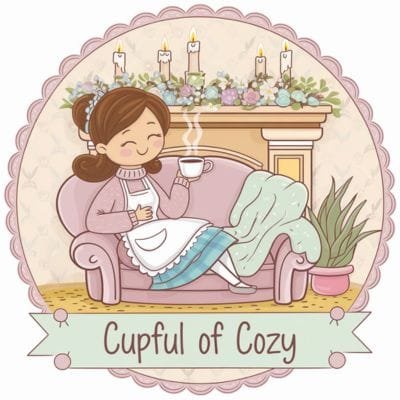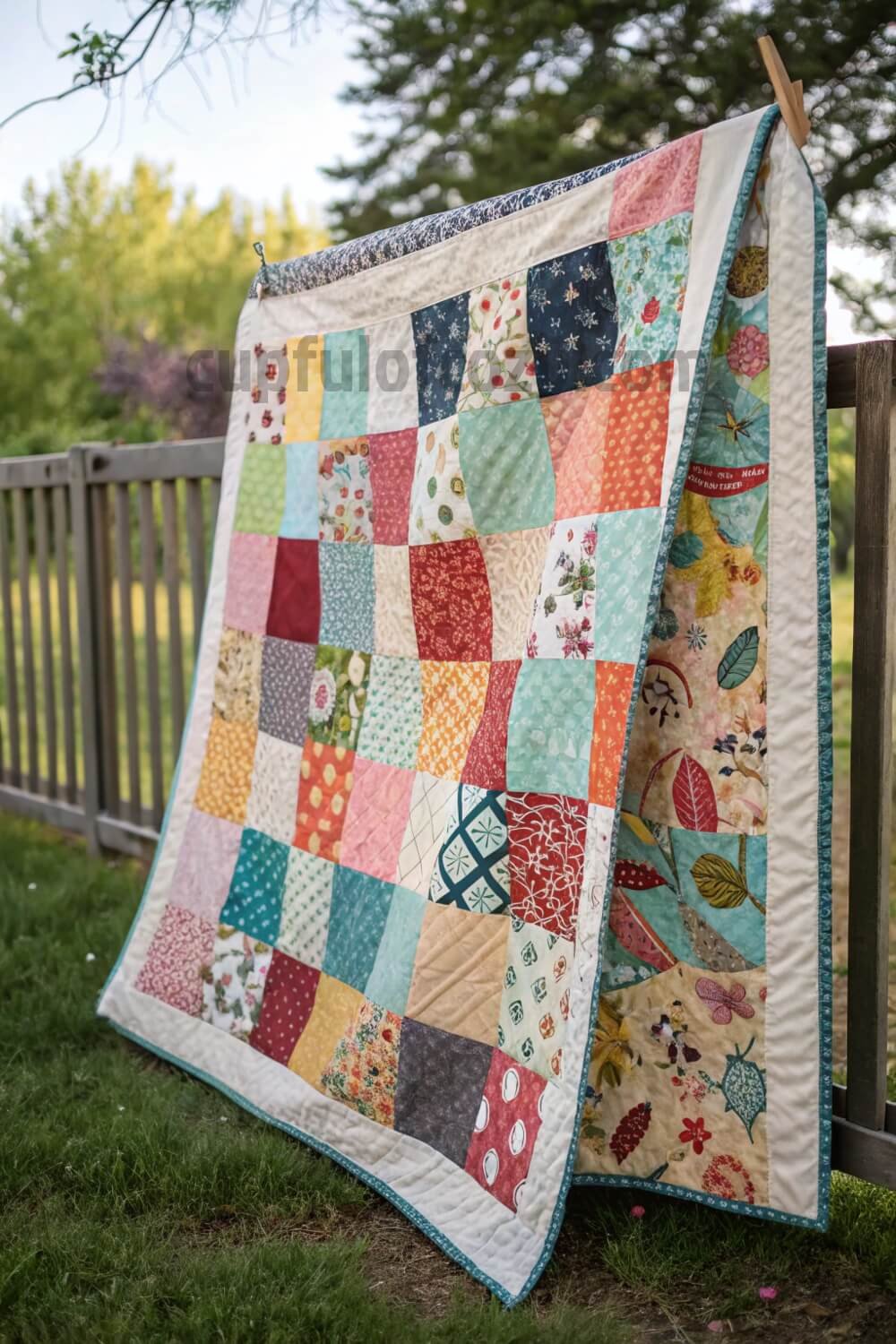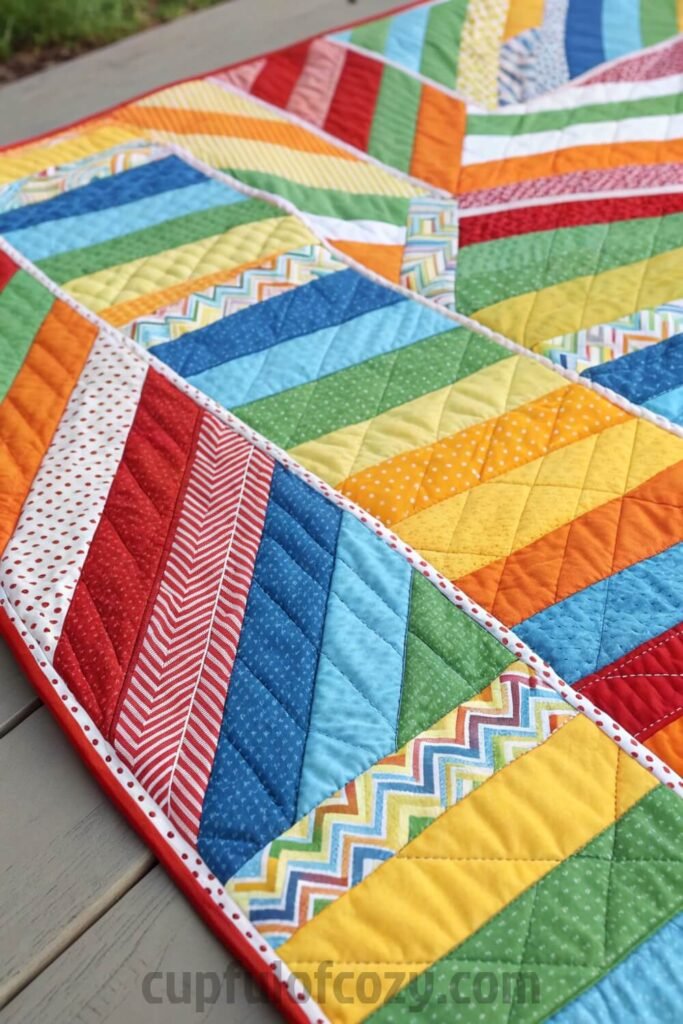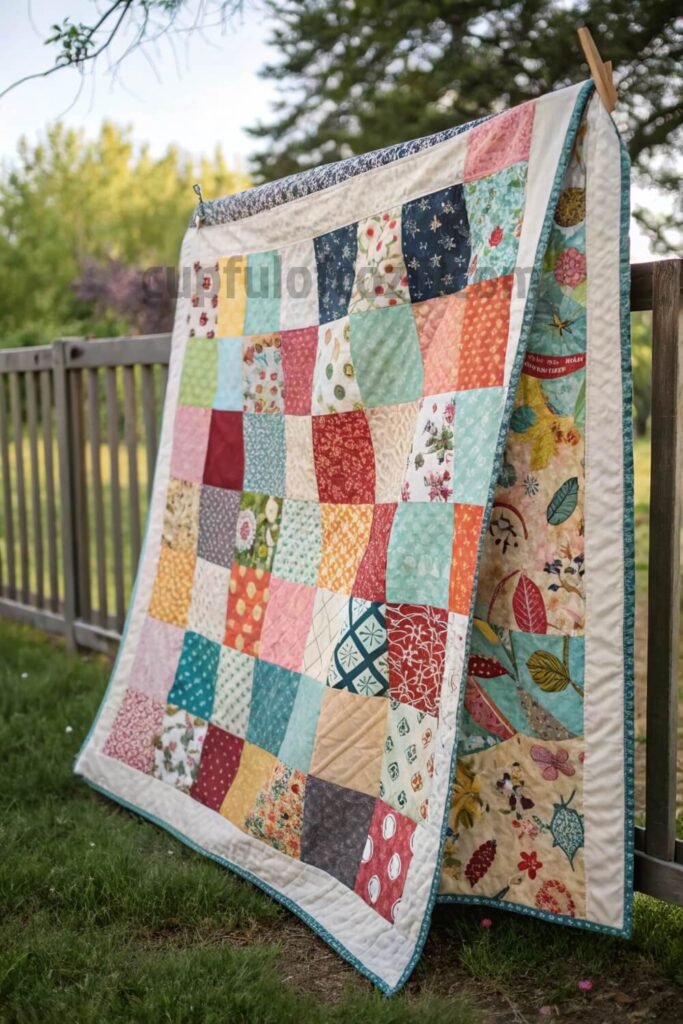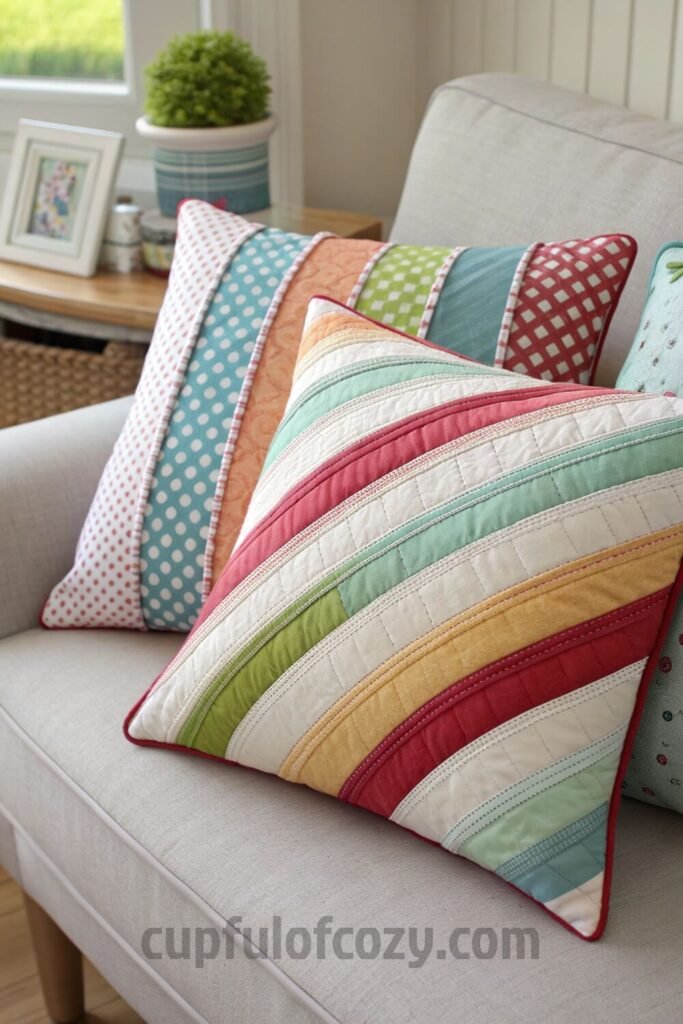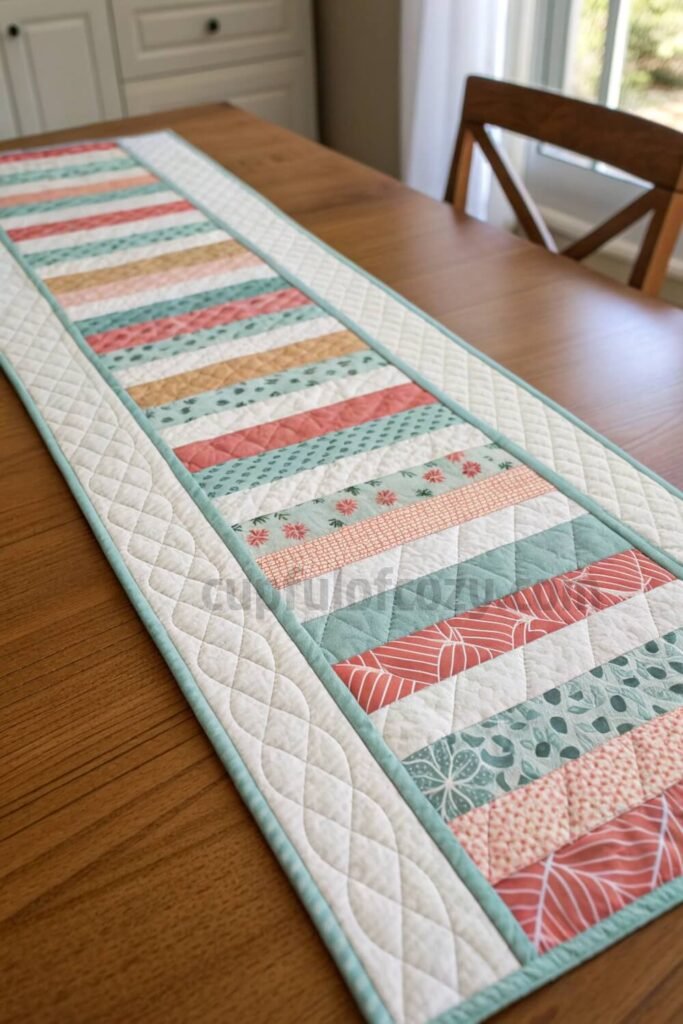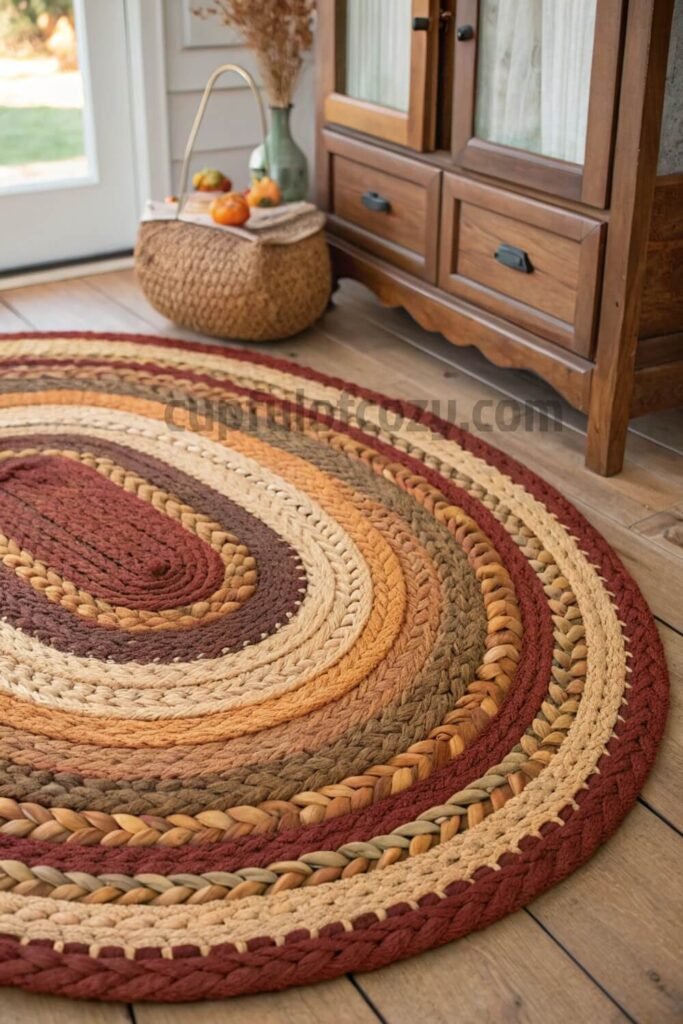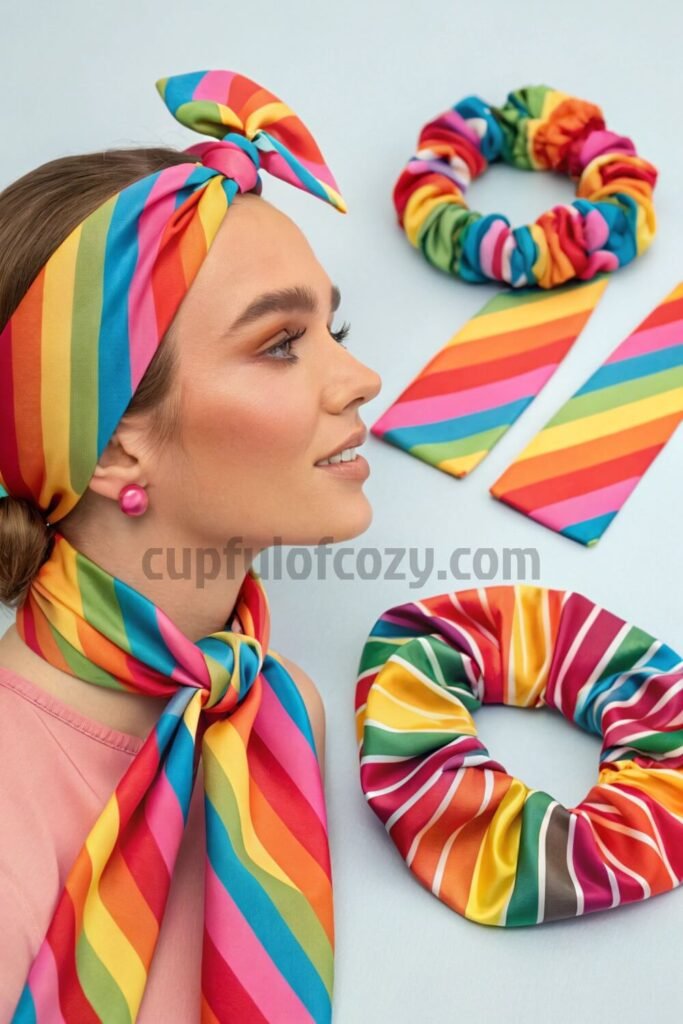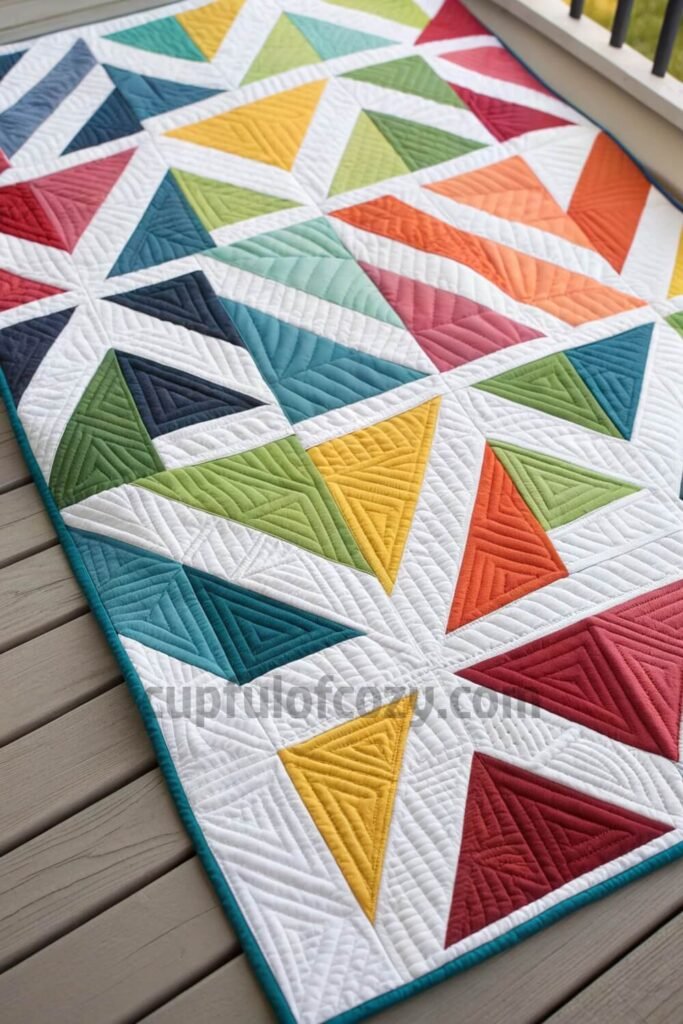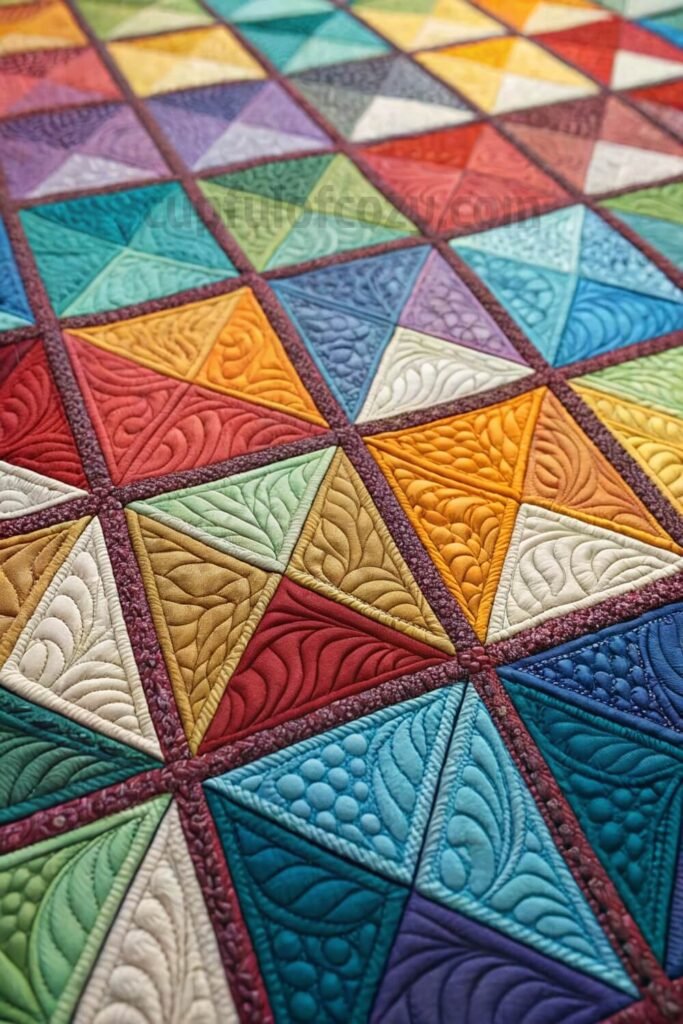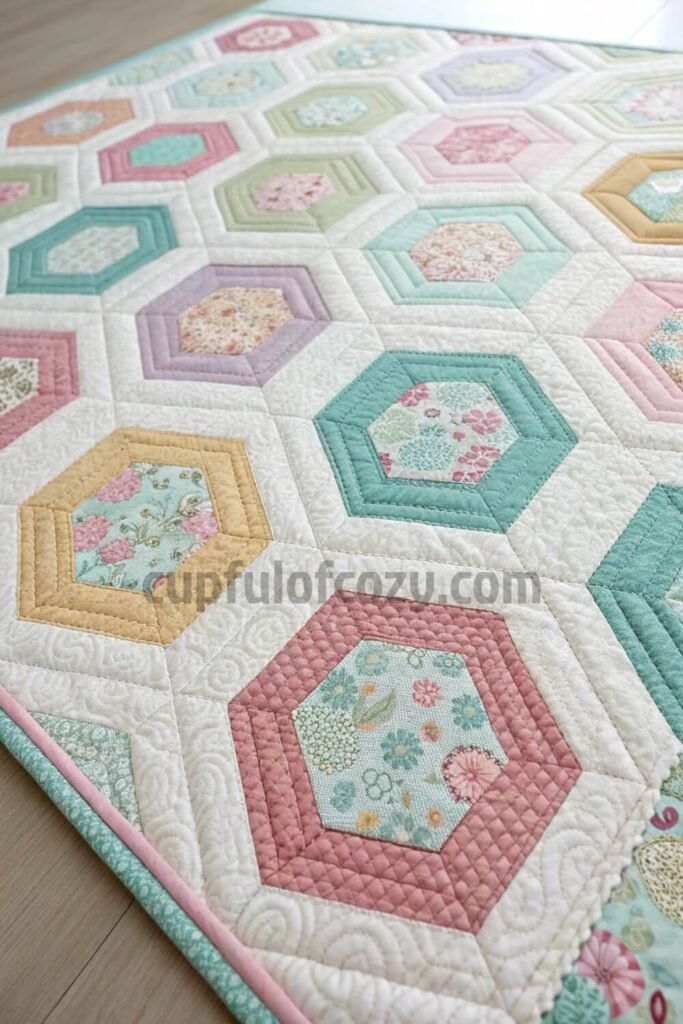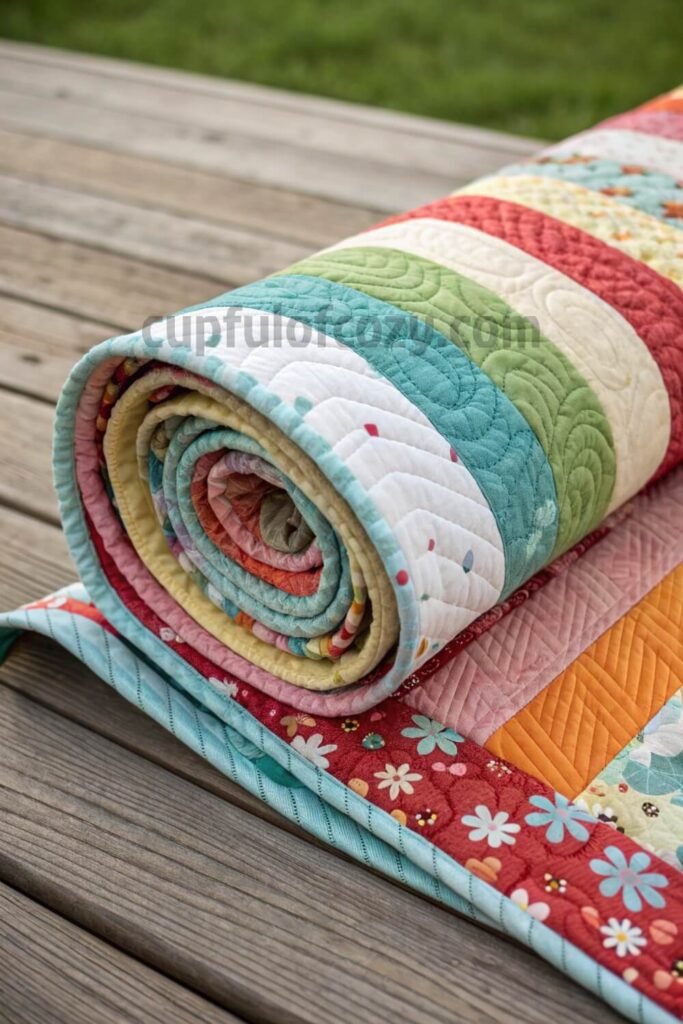So I was reorganizing my sewing room last weekend (you know how that goes, you start with good intentions and end up finding fabric you forgot you owned), and I came across this stack of half jelly rolls I’d been hoarding like some kind of fabric dragon. My mom always used to say I collected fabric faster than I could use it, and sitting there surrounded by all those gorgeous rolled bundles, I realized she was totally right.
But here’s what happened next, and why I’m so excited to share this with you. My teenage niece Maya came over while I was in full organizational chaos mode, saw all those colorful strips, and goes, “Auntie, can you teach me to make something with these? They look like candy.” And honestly, that’s when it hit me. These half jelly rolls are like the perfect gateway drug for getting kids into quilting without the intimidation factor of cutting hundreds of pieces or following super complex patterns.
I’ve been quilting for about fifteen years now (started when I was pregnant with my first and needed something to keep my hands busy), and I remember how overwhelming it felt in the beginning. All those rotary cutters and rulers and precise measurements. My grandmother, bless her heart, tried teaching me the traditional way with templates and hand-cutting everything. I loved her dearly, but after three attempts at making a simple nine-patch block, I was ready to give up entirely. The pieces never matched, my seams were wonky, and I felt like I needed an engineering degree just to make a pot holder.
That’s exactly why these pre-cut strips are such a game changer for kids. They eliminate that scary first step of “Am I cutting this right?” and jump straight into the fun stuff. Over the past few months, I’ve been experimenting with different projects that work well for younger sewers, from my eight-year-old nephew who can barely sit still for five minutes, all the way up to my friend’s seventeen-year-old daughter who’s already talking about fashion design school.
What I’ve discovered is that kids approach quilting completely differently than adults do. We get hung up on perfection and matching points and following patterns exactly. Kids? They just want to see colors come together and make something they can use or show off to their friends. They’re not stressed about whether their seams are exactly quarter-inch or if their binding is perfectly mitered. They just want to create something awesome, and honestly, that’s probably the healthiest approach to any craft.
Maya and I spent that whole afternoon working on her first project, and watching her face light up when she realized she was actually making something beautiful, something useful, something entirely her own, reminded me why I fell in love with quilting in the first place. It wasn’t about the perfect stitching or following someone else’s pattern exactly. It was about taking these separate pieces and bringing them together into something that didn’t exist before.
So over the next few weeks, I started collecting ideas. I asked other quilting friends what projects worked best with their kids and grandkids. I scrolled through way too many Pinterest boards (seriously, that app is dangerous for my productivity). I experimented with different techniques using half jelly rolls specifically, because they hit that sweet spot of being manageable for kids but still substantial enough to feel like a real accomplishment.
What I ended up with is this list of ten projects that actually keep kids engaged from start to finish. These aren’t those tiny practice squares that end up in a drawer somewhere. These are real, usable projects that kids can put in their rooms, give as gifts, or use every day. Some are quick weekend projects for kids who need instant gratification, others are longer-term challenges for teens who want to really dive deep into the craft.
The best part? Every single one of these projects taught the kids something new while still being fun enough that they actually wanted to finish them. And trust me, with kids and crafts, keeping them interested until the end is half the battle. So grab your favorite half jelly roll, clear off the kitchen table, and let’s dive into some seriously fun sewing projects.
1. Jelly Roll Race Quilt
My cousin brought her nine-year-old daughter over three weeks ago, and this kid had the attention span of a hummingbird on espresso. I’m talking about someone who gets bored halfway through a TikTok video. So when she asked to learn quilting, I knew I needed something that would give her immediate results or she’d be off doing cartwheels in the backyard within ten minutes.
The jelly roll race quilt saved the day. You literally sew all your strips end-to-end into one incredibly long strip, then you start this cutting and sewing process that feels like following a treasure map. The genius part is how the randomness works in your favor. Every cut and resew creates this unexpected pattern that looks way more complex than it actually is.
Watching her work on this was incredible. She’d sew for twenty minutes, then we’d lay out what she had so far, and she’d get this amazed look on her face like, “I made that?” By the end of the day, she had a full lap-size quilt top that was actually beautiful. Her mom texted me later that she’d been showing it off to everyone who came to the house, including the mail carrier.
- Before you hit “buy” on your next decor order, there’s a free 10-second step you should never skip: checking Rakuten (Ebates). I simply find the store name, click the deal, and shop like normal, and Rakuten sends me real cashback! Prices keep climbing everywhere, but this is one way to get a little back on the things you were going to purchase anyway. New members even get a $30 bonus when they spend $30 — which means your first order could pay you back instantly. Don’t miss out again. Click here to sign up and save money!
*Disclosure: This post includes affiliate links. I may earn a small commission if you join Rakuten through my link — but it doesn’t cost you anything extra. In fact, you’ll actually save more!
The randomness makes it completely foolproof too. If a seam gets a little wonky or the cutting isn’t perfectly straight, it just adds to the scrappy charm. Kids don’t stress about precision because the whole point is controlled chaos.
2. Scrappy Jelly Roll Quilt
This one lets kids go completely rogue with their creativity, which is exactly what my friend’s twin boys needed. These two are constantly trying to out-do each other, so I set them up with identical half jelly rolls and told them to make whatever they wanted.
Watching them work was like watching two completely different approaches to the same puzzle. One boy methodically arranged his strips by color family, creating these gorgeous gradient sections. The other one just grabbed strips randomly and sewed them together, creating this wild, chaotic pattern that somehow worked perfectly. They spent hours on my living room floor, debating color combinations and stealing ideas from each other.
What I love about this approach is that there’s literally no pattern to follow. Kids can make stripes, blocks, or just sew strips together however feels right to them. The half jelly rolls give you enough variety to be interesting without being overwhelming, which is perfect for that stage where kids want to make something substantial but don’t want to commit to a massive project.
Both boys finished their quilts and immediately claimed the best spots on the couch for movie nights. Success.
3. Jelly Roll Pillows
My neighbor’s twelve-year-old daughter saw a pillow I’d made using this technique and immediately wanted to learn how. We spent a Saturday afternoon in my sewing room, and I showed her how to arrange the strips in different ways. She chose this log cabin approach, starting with a center square and building outward with her strips.
The strips sew together beautifully for pillows because the scale is just right. Not too big that it takes forever, but substantial enough that kids feel like they’re making something real. She made three pillows that afternoon, each one with a slightly different color arrangement, and now her reading nook looks like something out of a home decorating magazine.
What really got me was when her mom mentioned that she’d been using those pillows every single day, not just as decoration but actually using them while she read or did homework. That’s when you know a project was worthwhile, when it becomes part of their daily life rather than just sitting on a shelf.
4. Table and Bed Runners
I made one of these for my fifteen-year-old nephew’s desk, and he surprised me by actually using it to display his guitar picks and sheet music. Teenagers can be tricky to make things for because they’re so particular about their style, but somehow this simple runner hit the right note.
The great thing about runners is that kids can keep them as simple or make them as complex as their skill level allows. Basic strip piecing works perfectly, but more advanced kids can experiment with angles or different block arrangements. The finished size feels substantial without being overwhelming, which hits that sweet spot for kids who want to make something impressive but don’t want to commit months to a project.
Plus, runners are instant room upgrades. My nephew’s friends always comment on his, and I’ve caught him straightening it and adjusting his display items when people come over. It’s become this point of pride for him, which makes my crafty aunt heart so happy.
5. Jelly Roll Rugs
This technique completely blew my mind when I first learned it. My friend’s daughter made one for her college dorm using a braiding method, and I was amazed at how durable it turned out to be. She’s been walking on it for an entire semester, and it still looks great.
The process is surprisingly meditative. Kids can work on it while listening to music or watching Netflix, and unlike precision piecing where every measurement matters, braided rugs are incredibly forgiving. If the braiding gets a little irregular or the stitching isn’t perfect, it just adds character and texture.
What I love most is the practicality. These kids are making something they’ll literally use every day, and there’s something really satisfying about that. Plus, the finished rug feels like such an accomplishment because it’s so different from what most people expect when they think “sewing project.”
6. Fabric Headbands and Accessories
Last spring, my daughter decided to throw a crafting party for her sixteenth birthday instead of the usual movie-and-pizza routine. We set up stations around the house with different projects, but the headband station was where everyone ended up clustering. Those jelly roll strips are the perfect width for headbands without any additional cutting, which made the whole process so much smoother.
The girls experimented with different styles, some making wide boho headbands, others going for thin, elegant looks. They figured out how to add elastic, made matching scrunchies, and even attempted fabric bracelets. One of her friends got so into it that she made headbands for her whole family as Mother’s Day gifts.
What struck me was how excited they were to wear something they’d made themselves. These weren’t just craft projects sitting in a box somewhere. They were actually incorporating them into their daily outfits and getting compliments from friends at school. That kind of real-world use makes any project feel more worthwhile.
7. Half Square Triangle Quilts
Once kids have mastered basic strip piecing, triangles are the natural next step. My friend’s fourteen-year-old had been sewing for about six months when she decided she was ready for more of a challenge. Those crisp geometric patterns appealed to her sense of precision, and she loved how modern and sophisticated the finished blocks looked.
Working with half square triangles teaches kids about precision in a way that’s actually fun rather than frustrating. Getting those points to match up perfectly becomes this little puzzle to solve, and when they nail it, the satisfaction is incredible. I watched her lay out different arrangements of her blocks, trying various color combinations and geometric patterns.
The half jelly roll gives you enough color variety to create really striking modern quilt designs without being overwhelming. Kids can make simple two-color combinations or get more adventurous with complex color progressions, depending on their comfort level and artistic vision.
8. Mini Triangle Patterns and Paper Piecing
This is definitely for kids who are ready to level up their skills, but when they’re ready, paper piecing becomes an obsession. My nephew discovered it during winter break and spent weeks working on increasingly complex mini triangle patterns. The precision required really appealed to his detail-oriented personality.
Paper piecing might sound intimidating, but it’s actually quite logical once you understand the process. Kids who enjoy puzzles or building with Legos often take to it naturally. The paper foundation provides structure, so even complex-looking patterns become manageable when broken down into numbered sections.
Working with smaller pieces from half jelly rolls makes it less overwhelming than jumping straight into a full-size paper piecing project. Kids can experiment with the technique on a manageable scale, building confidence before tackling larger designs.
9. Hexagon Quilts
Remember those gorgeous grandmother’s flower garden quilts? This is the modern, beginner-friendly version that actually works for kids. Using jelly roll strips with hexagon templates creates these amazing honeycomb patterns that look way more complicated than they actually are.
My friend’s teenage daughter made one as a wall hanging for her bedroom, and I’m still amazed by how professional it turned out. The combination of pre-cut strips and special templates eliminates most of the cutting guesswork, so kids can focus on color placement and assembly rather than getting bogged down in measurements.
The modular nature of hexagon quilts is perfect for kids because they can work on individual flowers when they have short bursts of time, then arrange them into larger compositions when they’re ready for a longer sewing session. It’s like building with fabric blocks.
10. Creative Backings and Bindings
Here’s something I wish someone had taught me years earlier: leftover strips make incredible quilt backings and bindings. Instead of buying additional yardage for the back, kids can piece together their remaining strips to create scrappy backings that are almost as interesting as the quilt front.
My daughter started doing this with all her projects, and the results are stunning. These scrappy backings add so much visual interest, and they use up every last bit of the fabric purchase, which appeals to environmentally conscious teens who hate waste.
Using coordinating strips for binding instead of solid fabric ties everything together beautifully. It’s one of those finishing touches that makes projects look professionally made rather than obviously homemade. Kids love that polished final result, and it teaches them to think about projects as complete compositions rather than just focusing on the front design.
The thing that gets me most excited about all these projects is how they grow with kids over time. A ten-year-old might start with a simple jelly roll race quilt, and by sixteen, they’re tackling complex paper piecing with the same basic materials. Each project builds skills while staying engaging enough to actually finish, which is honestly the key to keeping young sewers interested in the craft.
So grab whatever half jelly roll speaks to you, set up at the kitchen table, and see where creativity takes you. Some of the most beautiful quilts I’ve seen have come from kids just playing with colors and patterns, following their instincts rather than overthinking every decision.
Related posts:
12 Scrapbook Ideas for Baby’s First Holidays You’ll Wish You Started Earlier
10 Quick Handmade Stamped Christmas Cards with Nativity Scenes, Angels & Stars
9 Gorgeous DIY Art Projects Perfect for a Moody Maximalism Gallery Wall
12 Rustic Farmhouse Halloween Gnome Door Hangers Kids Can Help Paint & Assemble to Welcome Trick...
- Before buying anything online, check Rakuten (formerly Ebates) — either with the browser extension or directly on Rakuten.com. Just type in your store, click the current deal, and shop as usual. Every purchase earns you cashback that can be mailed to you or sent via PayPal. In today’s economy, even a few dollars back can turn into a Starbucks latte, McDonald’s fries for the kids, or a little treat you don’t have to budget for. If you’ve never used Rakuten before, you’re missing out on free money — and right now, you’ll even get a $30 bonus when you spend your first $30. Click here to sign up and stop letting your online orders steal from you. Click here to sign up and save money!
*Disclosure: This post includes affiliate links. I may earn a small commission if you join Rakuten through my link — but it doesn’t cost you anything extra. In fact, you’ll actually save more!
